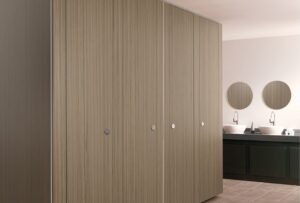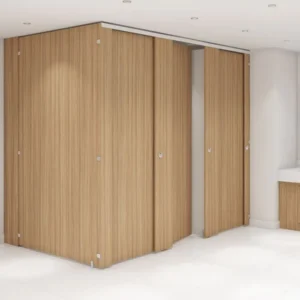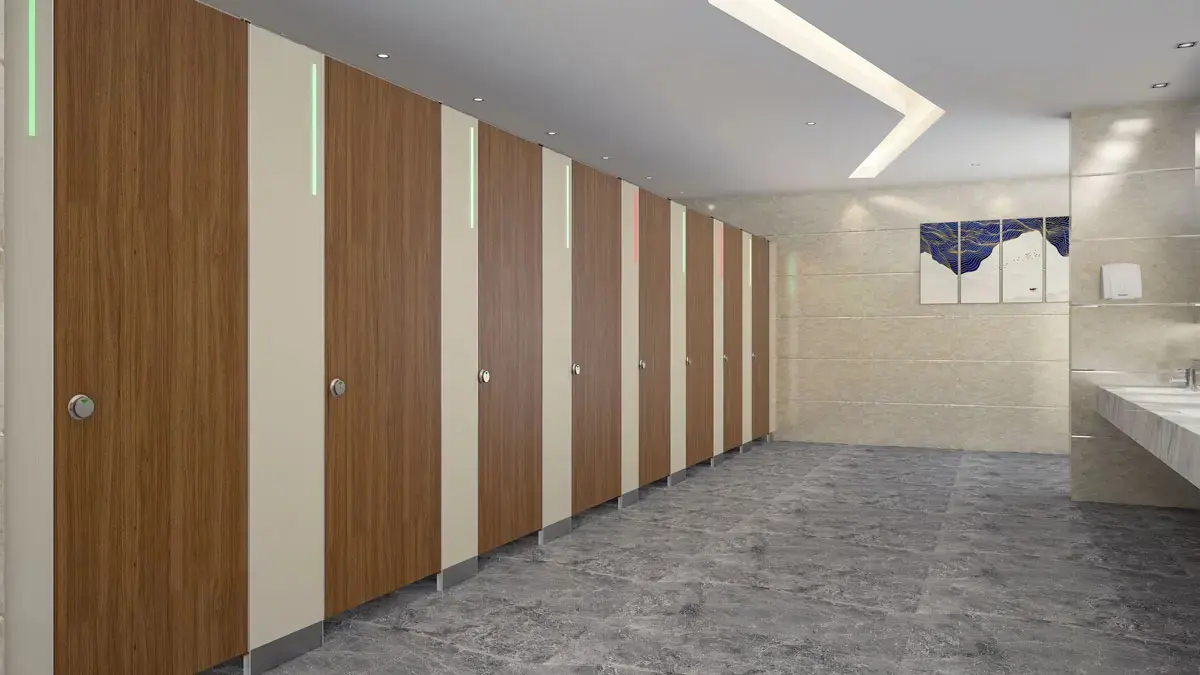HPL vs Aluminum Toilet Partitions: Which One to Choose?
Public restrooms in Oman face a unique challenge: they must balance durability, hygiene, and aesthetics while handling heavy daily use. Choosing the right toilet partitions can make all the difference. Two of the most common materials are HPL (High Pressure Laminate) and Aluminum.
Both materials offer distinct advantages, but which is the better choice for Oman’s commercial, educational, and hospitality projects? Let’s compare them side by side

Understanding the Materials
HPL (High Pressure Laminate) Toilet Partitions
Made from compact laminate panels compressed under high pressure and heat, HPL partitions are dense, non-porous, and extremely durable.
You can dive deeper into how HPL works in our full HPL Panels Guide.
Key traits:
-
Moisture resistant
-
Scratch and impact resistant
-
Available in diverse designs and finishes
-
Easy to clean and disinfect
Aluminum Toilet Partitions
Aluminum partitions are lightweight and corrosion-resistant. They are often chosen for projects with budget restrictions.
Key traits:
-
Resistant to rust
-
Lightweight structure
-
Common in basic or temporary setups
-
Limited design flexibility
Durability in Oman’s Climate
Oman’s climate is humid and hot, which creates challenges for restroom materials
-
HPL: Performs exceptionally well in humid areas like gyms, schools, and malls. It does not warp or swell
-
Aluminum: Resists rust but may dent or bend under pressure, making it less suitable for high-traffic facilities

Hygiene and Maintenance
Hygiene is a top concern in public restrooms
-
HPL: The non-porous surface prevents bacteria buildup, ensuring a hygienic solution. This advantage is also why HPL is preferred for laboratory furniture
-
Aluminum: Easy to clean, but scratches and dents can trap dirt and compromise cleanliness
Aesthetic Flexibility
Design plays a major role in creating modern, welcoming restrooms
-
HPL: Available in a wide range of colors, textures, and patterns, including wood and stone looks. This makes it a preferred choice for corporate offices, hotels, and restaurants
-
Aluminum: Mostly limited to plain metallic finishes, offering less versatility for premium projects
For architects seeking consistent design integration, HPL partitions can be matched with HPL interior cladding used in other spaces, as seen in our article on HPL Interior Cladding
Cost Considerations
-
HPL: Higher upfront cost but longer lifespan and reduced maintenance costs. A solid long-term investment
-
Aluminum: Cheaper initially, but dents, scratches, and replacement needs often make it costlier over time
Where Each Material Fits Best
-
Choose HPL:
-
High-traffic public restrooms (malls, airports, stadiums)
-
Educational and healthcare institutions
-
Projects where hygiene and aesthetics matter
-
Facilities needing consistency with other HPL applications, such as lockers or vanities
-
-
Choose Aluminum:
-
Low-budget projects
-
Temporary installations
-
Facilities with very light usage
-
For example, many premium brands in Oman prefer HPL toilet cubicles because they combine hygiene, durability, and style, as explained in our dedicated article: Why HPL Toilet Cubicles Are the Best Choice for Public Restrooms in Oman.
Beyond Toilet Partitions
What makes HPL truly powerful is its versatility. The same material used for toilet cubicles also extends to:
-
Exterior facades → HPL Exterior Cladding
-
Laboratories, kitchens, and vanities
-
Lockers and storage systems
This makes it easier for developers in Oman to maintain a consistent design language across entire facilities
Both HPL and aluminum have their place in the market. Aluminum partitions suit projects with tight budgets and light usage. But for Oman’s demanding conditions—where durability, hygiene, and aesthetics are crucial—HPL toilet partitions are the superior choice
They last longer, look better, and maintain hygiene standards more effectively, making them a wise investment for public and private facilities alike


